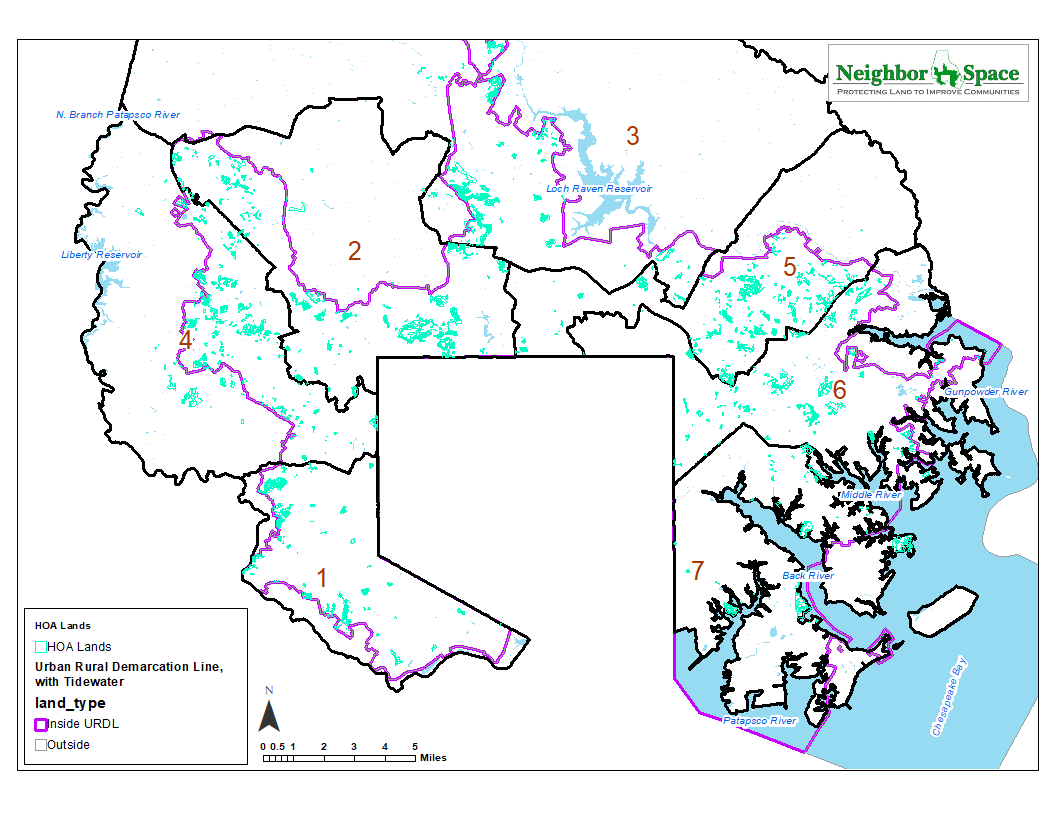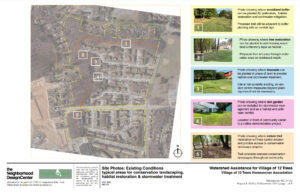Habitat Baltimore County (HABACO) Preserve
WHAT IS IT?
A new type of conservation effort that involves no ownership interest in land, but, rather, serving as a consultant to help Homeowner Associations (HOAs) improve and better steward their lands to provide recreational opportunities for their residents, habitat for pollinators, and management of stormwater with green infrastructure. The lands so managed would become part of Habitat Baltimore County (HABACO) Preserve, land that HOAs own and voluntarily agree to maintain as pollinator habitat with advice and assistance from NeighborSpace.
In his 2020 book, Nature’s Best Hope, ecologist Doug Tallamy argues that habitat has become so fragmented that a healthy ecosystem, one that can sustain the living systems on which all life depends, is no longer possible through conservation alone, a hard truth for a land trust like NeighborSpace. In Tallamy’s view, there simply isn’t enough vacant land left to do the job.
What must be done to avert a crisis, according to Tallamy, is to create habitat on private lands, e.g., individual yards and corporate and institutional campuses. Tallamy suggests that “[i]f we connect tiny isolated natural areas by building biological corridors between them, the species that live there can intermingle and increase their populations.” [1] He argues, further, that “restoring viable habitat within the human-dominated landscapes that separate habitat fragments – with as much of the land as possible – is the single most effective thing we can do to restore the ecological integrity of these landscapes.”[2]
Where are there an abundance of “yards” and common areas of turf in most urbanized areas? The answer lies in homeowner association (HOA) communities. Across the U.S., almost 70 million people (about 20% of the total population) reside in an HOA community. Virtually all new housing developments in the U.S. are associated with an HOA. According to our GIS analysis, there are 4,300 acres of HOA lands in Baltimore County, most of it inside the Urban Rural Demarcation Line (URDL), as shown in the map below. There are at least 2,922 parcels greater than 900 square feet in size.

Many of these areas, particularly those developed in the 20th century, are not managed by sustainable or environmental best practice standards. They are frequently of limited use both for human activity and for environmental protection, such as providing habitat for pollinators and managing stormwater runoff sustainably. In addition, their maintenance can be costly, with landscaping expenses approaching 75% of an annual HOA budget, according to one source. It is our assumption that a win-win could be created through a new project, Habitat Baltimore County (HABACO) Preserve if environmental best practices on HOA lands would save on maintenance costs and create a more sustainable environment for both people and pollinators. It is our further assumption that demonstrated maintenance cost savings would drive more HOAs to want to participate, helping to create the “biological corridors” for which Tallamy advocates.
Village of 12 Trees
This project seeks to develop a conservation landscape and stormwater management plan for the Village of Twelve Trees, a predominantly black neighborhood in the Scotts Level Subwatershed of the Gwynns Falls Watershed in Randallstown, Maryland. The plan would help further goals in the Middle Gwynns Falls Small Watershed Action Plan and pilot conservation design principles of a new program being advocated by NeighborSpace for homeowner association lands in Baltimore County: Habitat Baltimore County (HABACO) Preserve.
